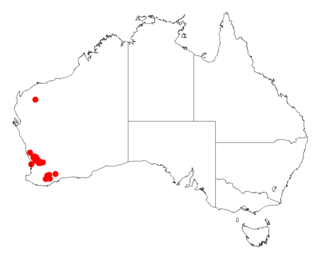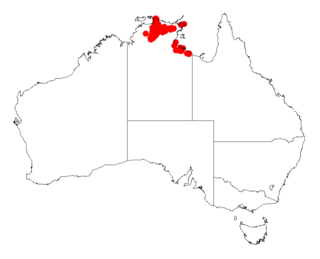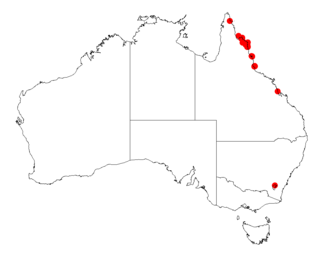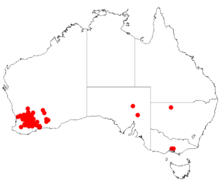
Acacia crassistipula is a shrub belonging to the genus Acacia and the subgenus Phyllodineae that is endemic to western Australia.

Acacia dempsteri is a shrub belonging to the genus Acacia and the subgenus Phyllodineae endemic to south western Australia.

Acacia merrickiae is a shrub belonging to the genus Acacia and the subgenus Phyllodineae that is endemic to a small area of south western Australia.

Acacia nigripilosa is a shrub belonging to the genus Acacia and the subgenus Phyllodineae that is endemic to Western Australia.

Acacia profusa is a shrub of the genus Acacia and the subgenus Phyllodineae that is endemic to south western Australia.

Acacia pusilla is a shrub of the genus Acacia and the subgenus Phyllodineae the is endemic to south western Australia.

Acacia robeorum, commonly known as Robe's wattle, is a shrub of the genus Acacia and the subgenus Phyllodineae that is endemic to north western Australia.

Acacia robiniae, commonly known as Robin's wattle, is a shrub of the genus Acacia and the subgenus Phyllodineae that is endemic to south western Australia.

Acacia semitrullata is a shrub of the genus Acacia and the subgenus Phyllodineae that is endemic to south western Australia.

Acacia squamata is a shrub of the genus Acacia and the subgenus Phyllodineae that is endemic to south western Australia.

Acacia chrysopoda is a shrub of the genus Acacia and the subgenus Plurinerves that is endemic to an area of south western Australia.

Acacia colletioides, commonly known as wait-a-while, pin bush and spine bush, is a shrub of the genus Acacia and the subgenus Plurinerves that is native to Australia.

Acacia dura is a shrub of the genus Acacia and the subgenus Plurinerves that is endemic to south western Australia.

Acacia eremaea is a shrub or tree of the genus Acacia and the subgenus Plurinerves that is endemic to an area in western Australia.

Acacia galeata is a shrub or tree of the genus Acacia and the subgenus Plurinerves that is endemic to an area of western Australia.

Acacia lanuginophylla, or woolly wattle, is a shrub of the genus Acacia and the subgenus Plurinerves that is endemic to south western Australia. It is currently listed as a vulnerable species according to the Environment Protection Biodiversity Conservation Act 1999.

Acacia ruppii, commonly known as Rupp's wattle, is a shrub belonging to the genus Acacia and the subgenus Phyllodineae native to eastern Australia. It is listed as endangered in the Environment Protection and Biodiversity Conservation Act 1999.

Acacia producta is a shrub of the genus Acacia and the subgenus Plurinerves that is endemic to northern central Australia.

Acacia racospermoides is a shrub or tree of the genus Acacia and the subgenus Plurinerves that is endemic to an area of north western Australia.

Acacia venulosa, commonly known as veiny wattle or veined wattle, is a shrub of the genus Acacia and the subgenus Plurinerves that is endemic to an area of eastern Australia.




















